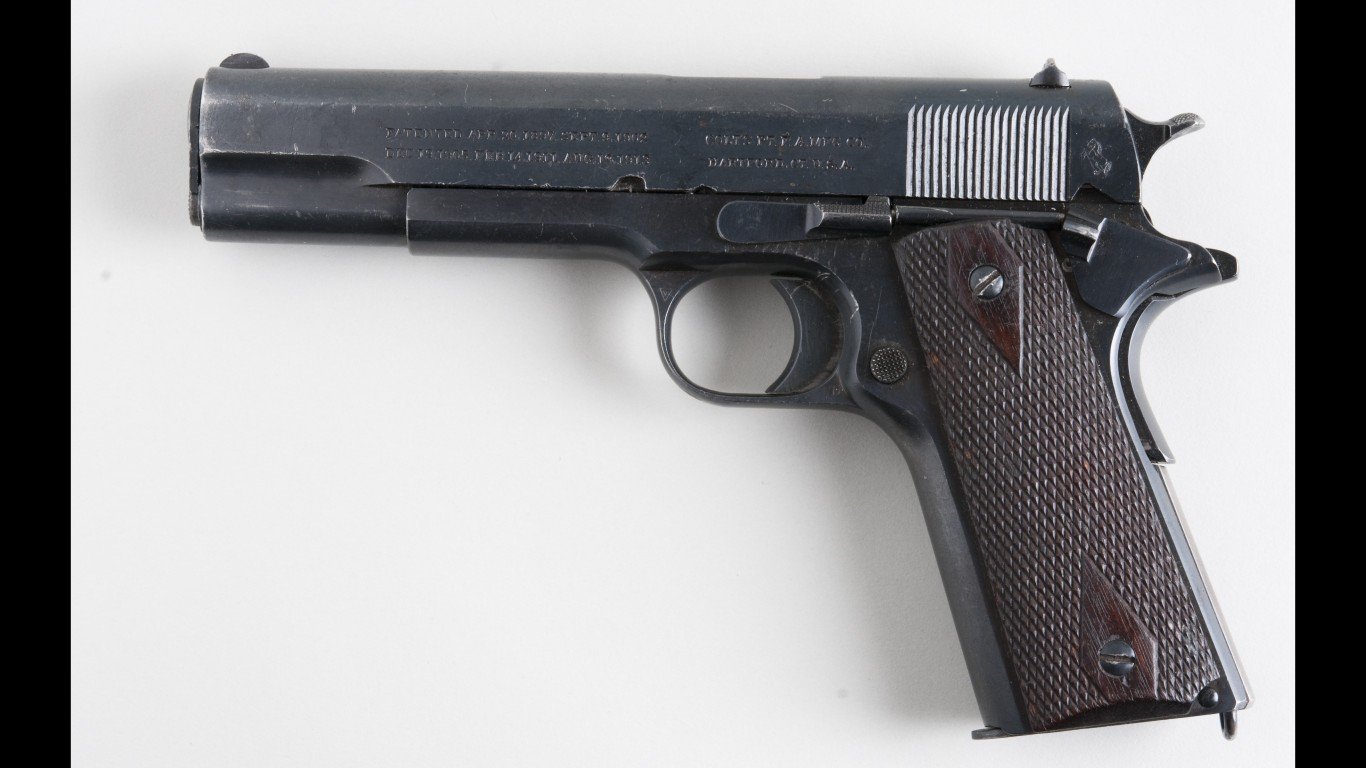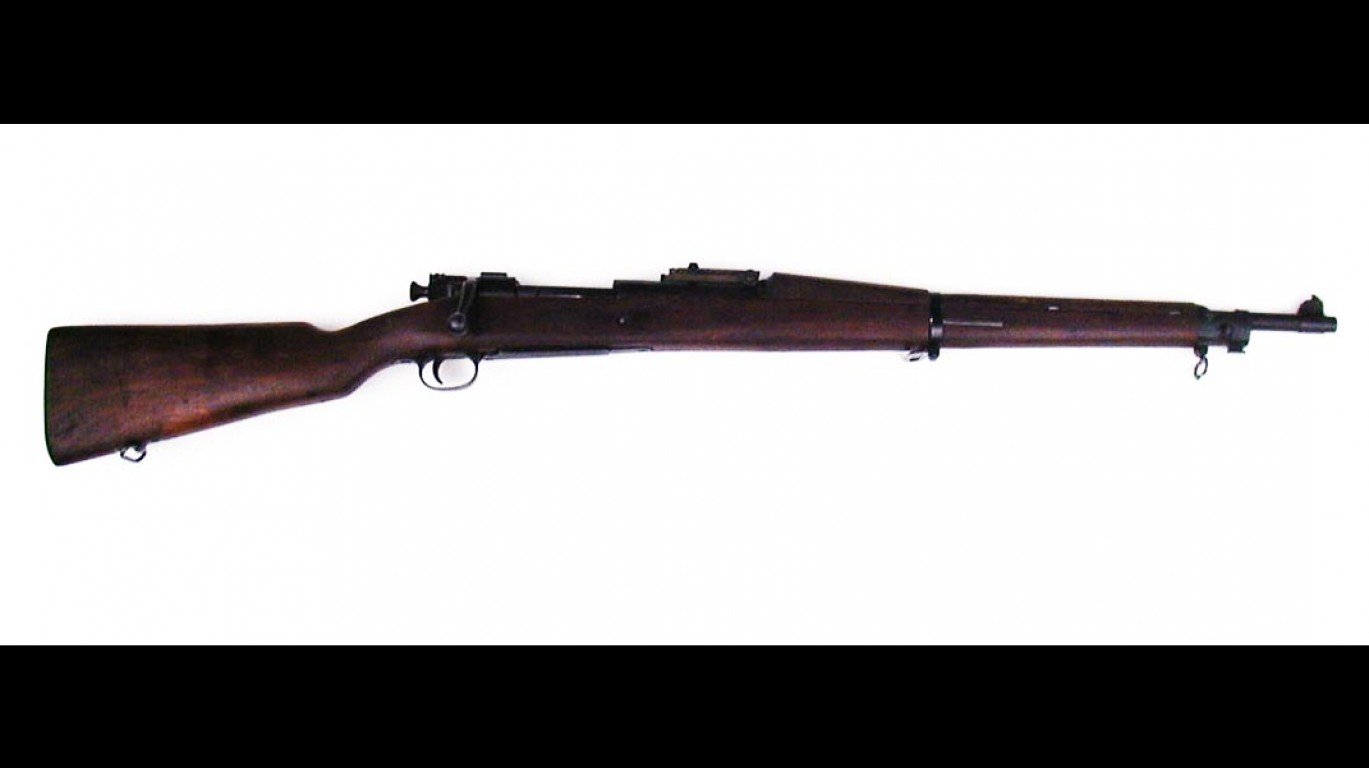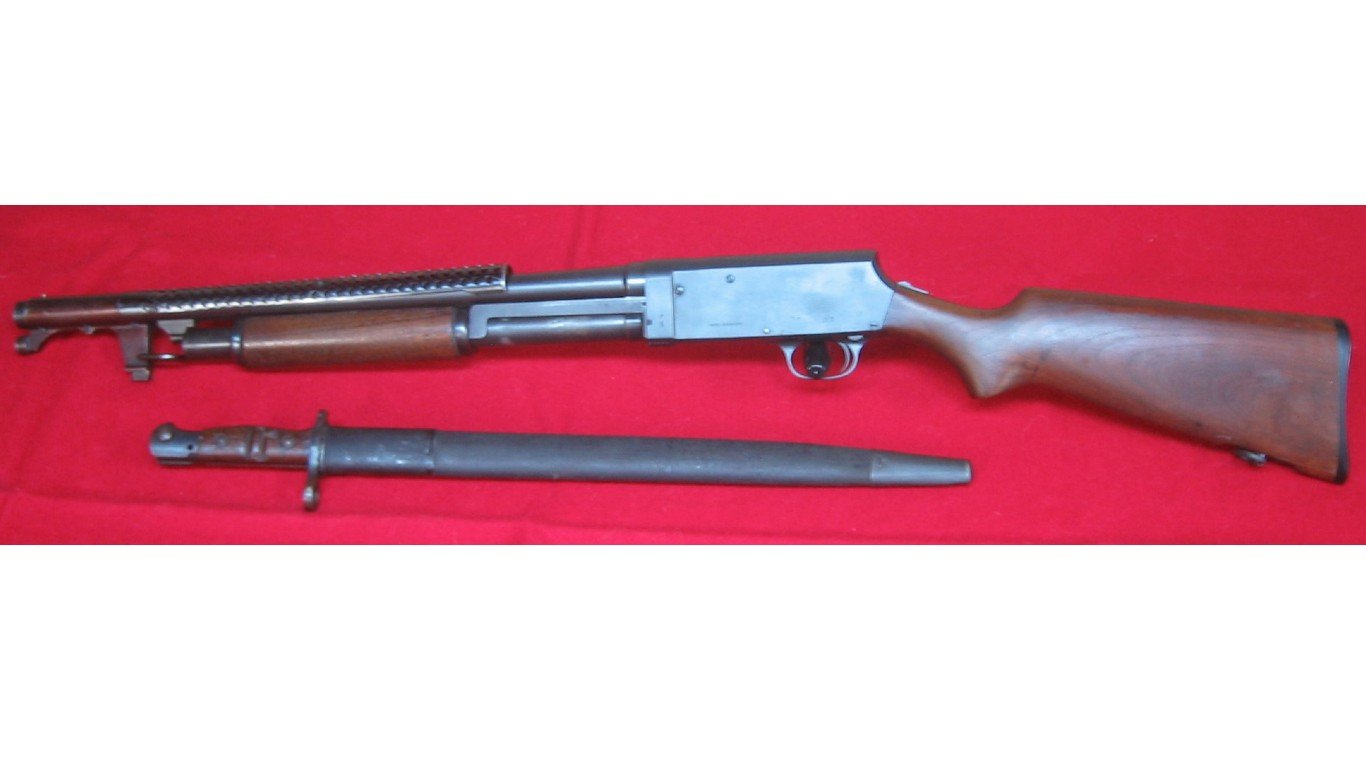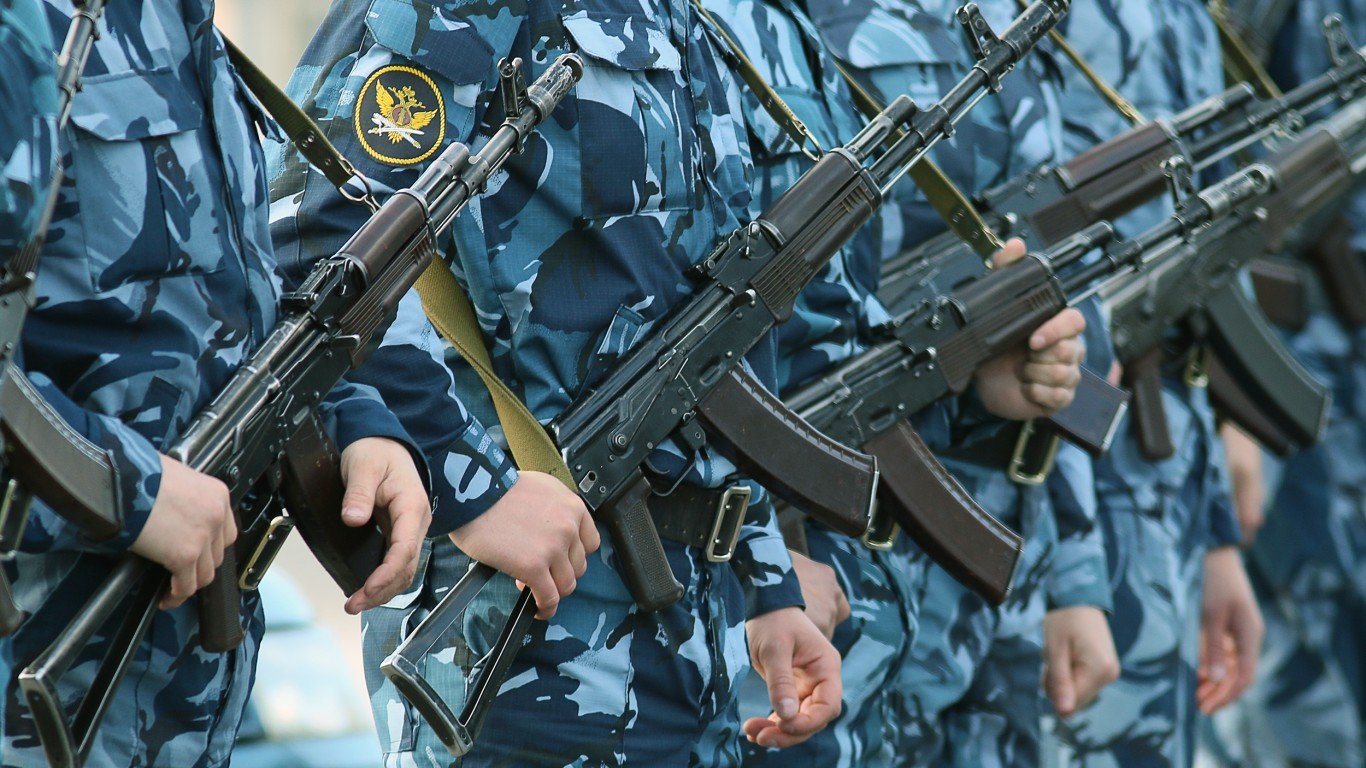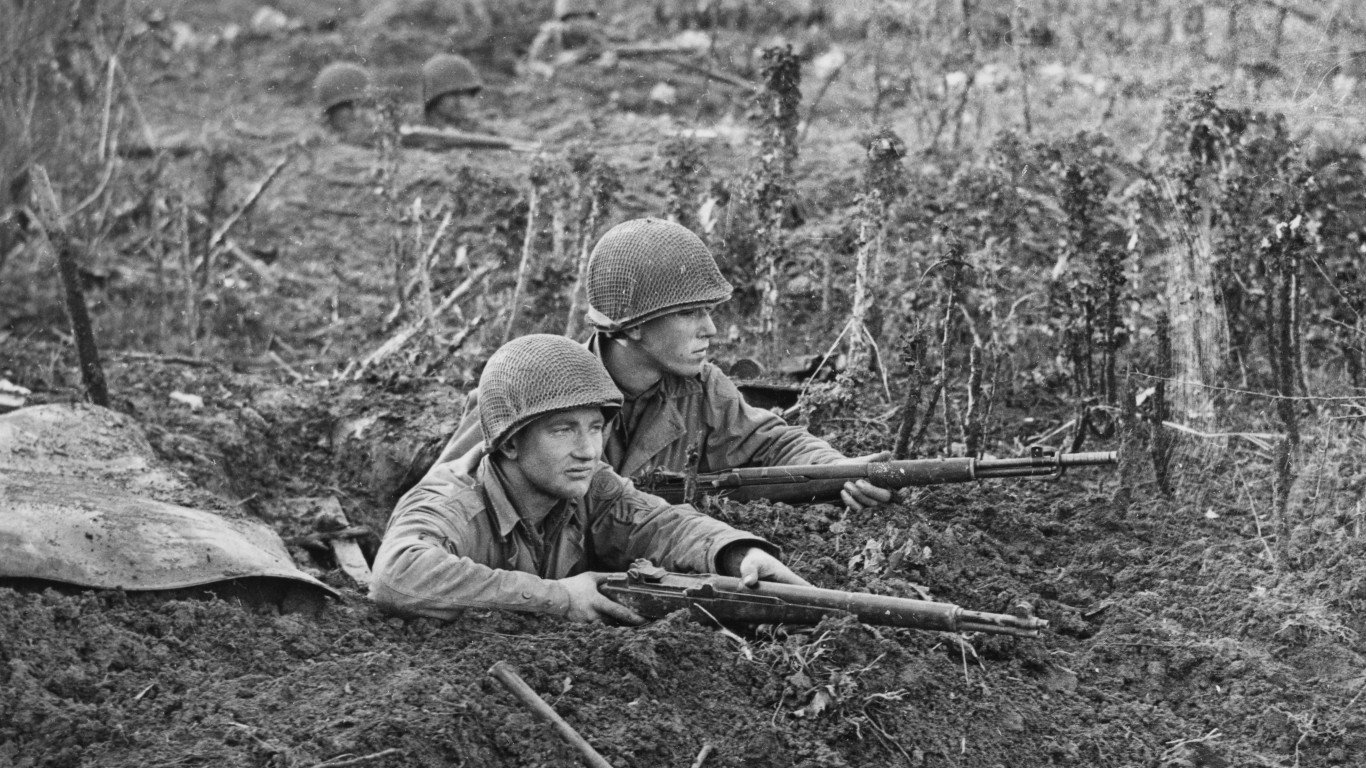

During World War II, the United States war industry built 86,000 tanks, 96,000 bombers, 2.4 million trucks, and 6.5 million rifles to help deliver an Allied victory. (These are the 18 biggest battles fought during World War II)
Before America’s direct involvement in the war, the U.S. was using its industrial might to back the Allies, supporting their fight against Nazi Germany and Axis powers by supplying them with weapons. Still, the surprise attack on Pearl Harbor found the U.S. on its heels, lacking the quantity of firearms necessary to wage a full-scale war.
Thrust into the war overnight, the U.S. government threw normal procurement protocol out the window, and virtually all domestic firearm development and manufacturing shifted to support the war effort. Some of those firearms carried in combat by American servicemen across Europe, North Africa, and the Pacific are now iconic, while others have been largely forgotten.
Using data from a range of sources, including the Warfare History Network, the National Park Service, and the National WWII Museum, 24/7 Wall St. identified 17 of the guns that helped America fight World War II. While this list is not exhaustive, we considered a range of firearm types, including rifles, shotguns, machine guns, and handguns.
Some of these guns were developed specifically for the war, while others – including some revolvers – had been around for decades. Several were churned out by the millions and carried by multiple service branches. Others, meanwhile, were not widely adopted but still found niche roles in the broader war effort. (Here is a look at the guns that won the old west.)
Click here to see the guns that helped America fight World War II.
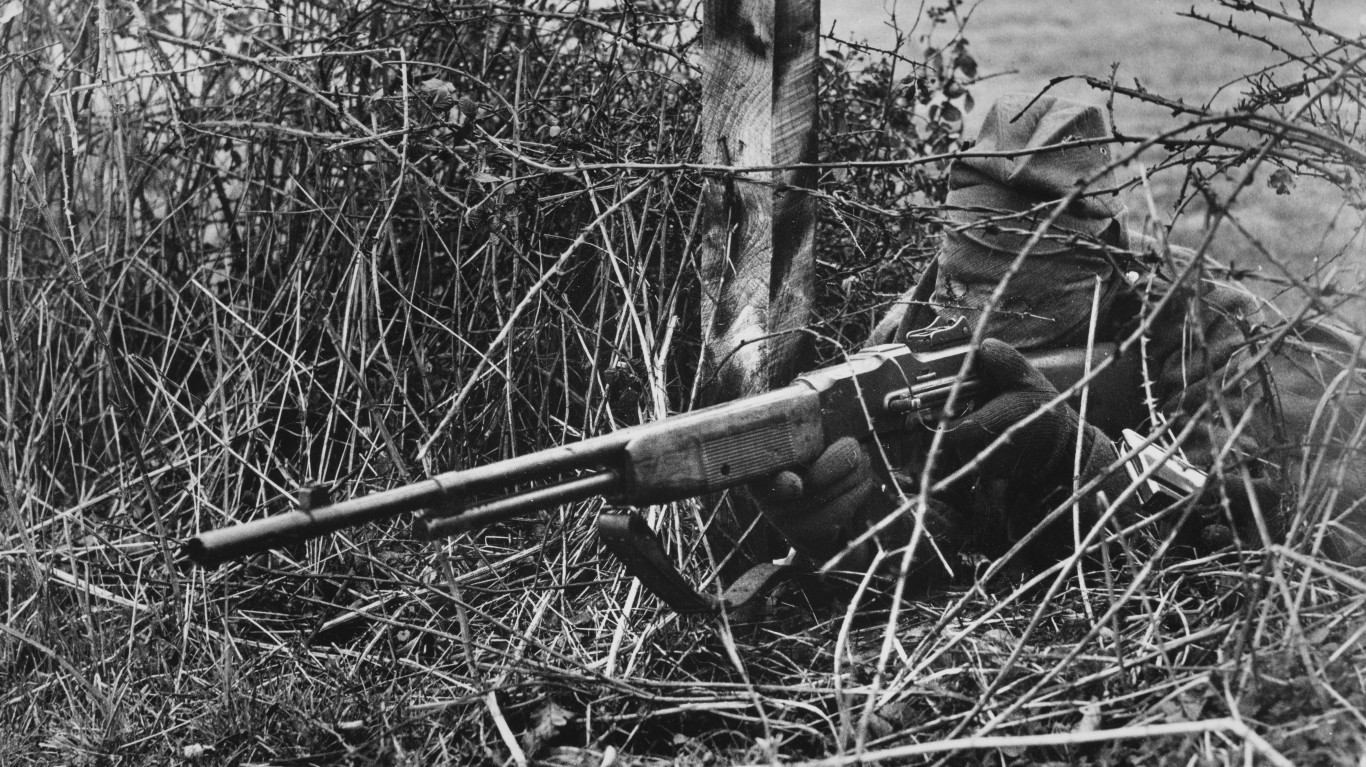
1. M1918 Browning Automatic Rifle
> Weapon type: Light machine gun
> Caliber: .30-06
The Browning Automatic Rifle, or BAR, was the standard light machine gun of the U.S. military throughout WWII. Typically chambered for .30-06 ammunition and weighing between 13 and 24 pounds, depending on the model, BARs were powerful and capable of firing 650 rounds per minute.
Official policy in the European theater dictated at least one BAR per rifle squad. This ultimately changed to a minimum of two, as an answer to the Germans’ superior MG34 machine guns. BARs were also used by Marines in the Pacific as an anti-sniper weapon.
[in-text-ad]
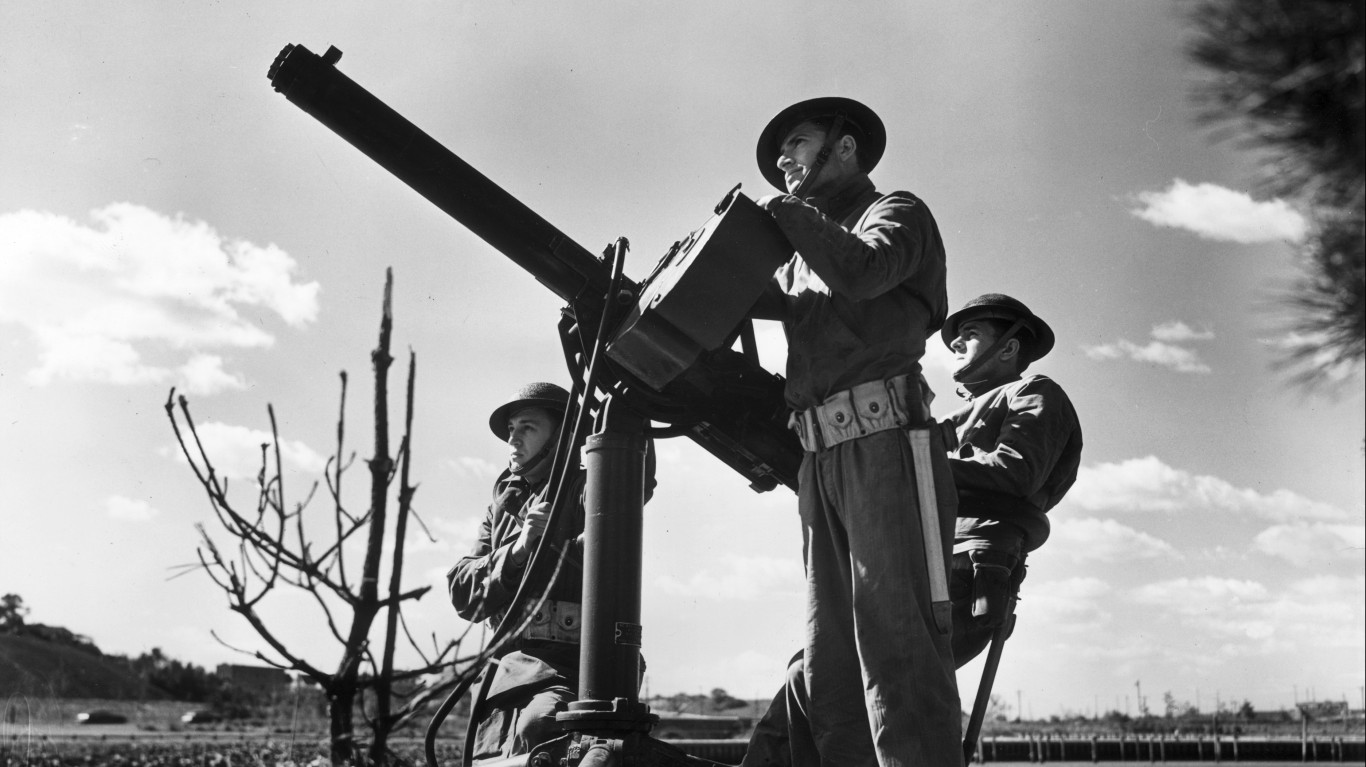
2. M2 Browning
> Weapon type: Machine gun
> Caliber: .50
The M2 Browning was one of the most versatile and widely used weapons by the U.S. military during WWII. A heavy, .50 caliber machine gun capable of firing 500 rounds a minute, the M2 was used as an anti-aircraft gun, a close-range naval gun, a turret on bombers. It was also fixed to combat vehicles and fighter planes. Initially developed in World War I, the M2 Browning is still used by the U.S. military today.
3. Colt M1911
> Weapon type: Pistol
> Caliber: .45 ACP
The 1911 is one of the most iconic and popular handguns ever made. Though the original M1911 is associated with Colt, many other manufacturers – including Ithaca, Remington, Savage, and the Springfield Armory – bought the development rights to assist in production. In the years leading up to and during WWII, more than 19 million M1911 are estimated to have been produced.
The semi-automatic pistol, chambered for .45 caliber ammunition, was the standard issue sidearm for the U.S. military from 1911 to 1986.
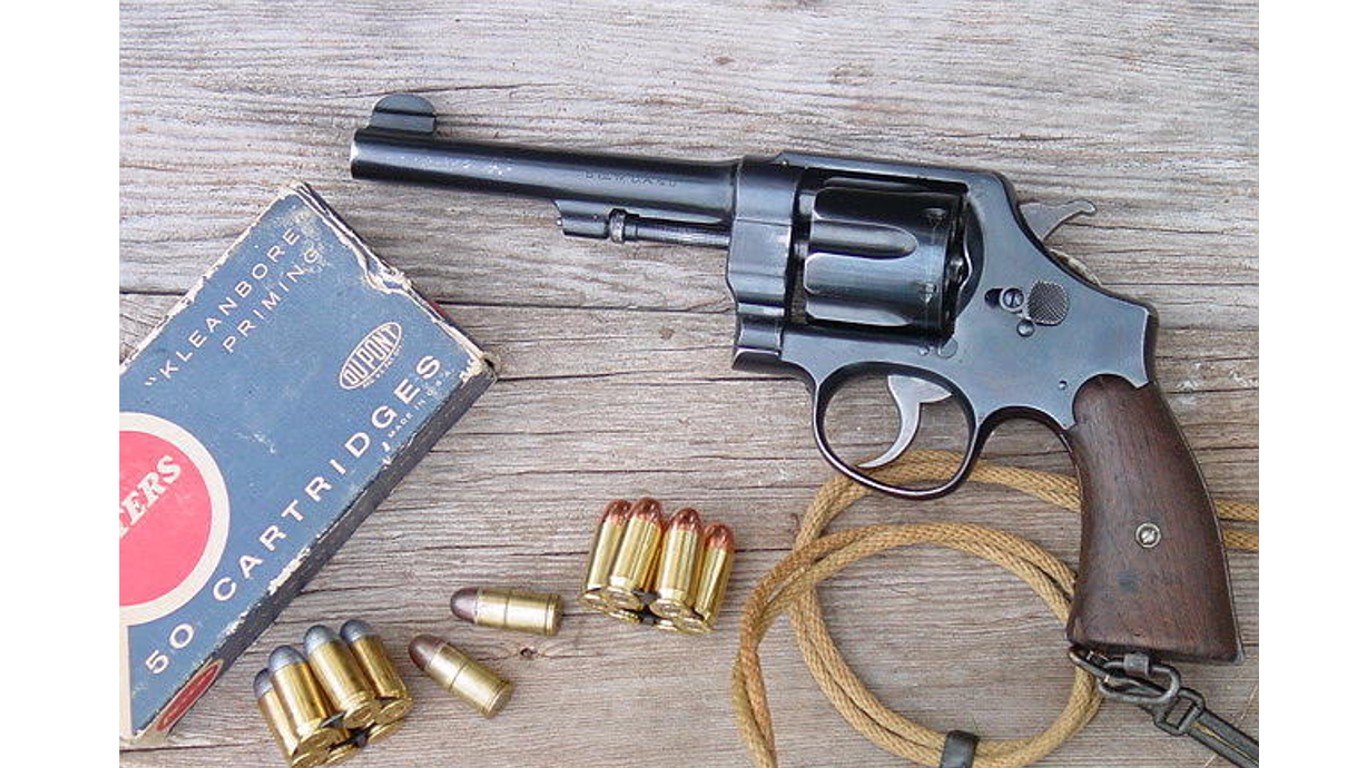
4. Smith & Wesson M1917
> Weapon type: Revolver
> Caliber: .38 Special
Upon America’s entry to WWII, all service branches faced a handgun shortage – but with most M1911s going to the Army, the Navy was especially disadvantaged. As a result, the Navy contracted Smith & Wesson to produce a version of their 1917 revolver.
The new M1917s were chambered for .38 Special ammunition, had a 4 inch barrel, a non-reflective blue finish, and – known as the “Victory model” – a serial number that began with the letter “V.” S&W produced some 900,000 of these revolvers for the U.S. government, many of which were carried by Naval and Marine aviators. Before the U.S. entered the war, S&W sold a similar variation of the M1917 to the British military.
[in-text-ad-2]
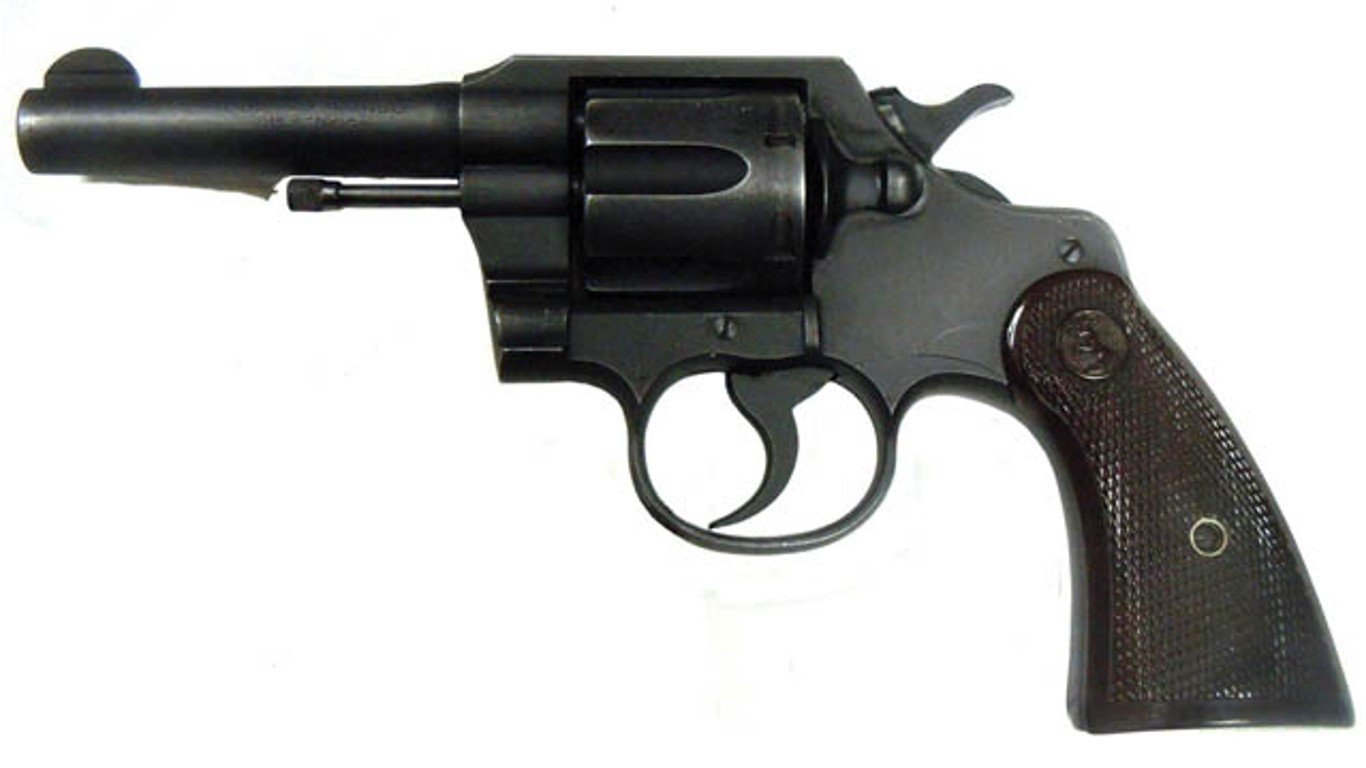
5. Colt Commando
> Weapon type: Revolver
> Caliber: .38
The Colt Commando was a slightly modified version of the company’s Police Official revolver – several thousand of which were ordered by the U.S. government just days after the Pearl Harbor attack. Cheaper and faster to manufacture than the Police Official, the Commando was designed to cut costs. It featured a 4 inch barrel – though some smaller versions had a 2 inch barrel – and was chambered for .38 caliber rounds.
All told, the U.S. government purchased about 49,000 Colt Commandos during the war. About 16,000 of them went to the U.S. Army, 1,800 went to the U.S. Navy, and the remainder went to intelligence organizations, guards, and some non-military personnel.
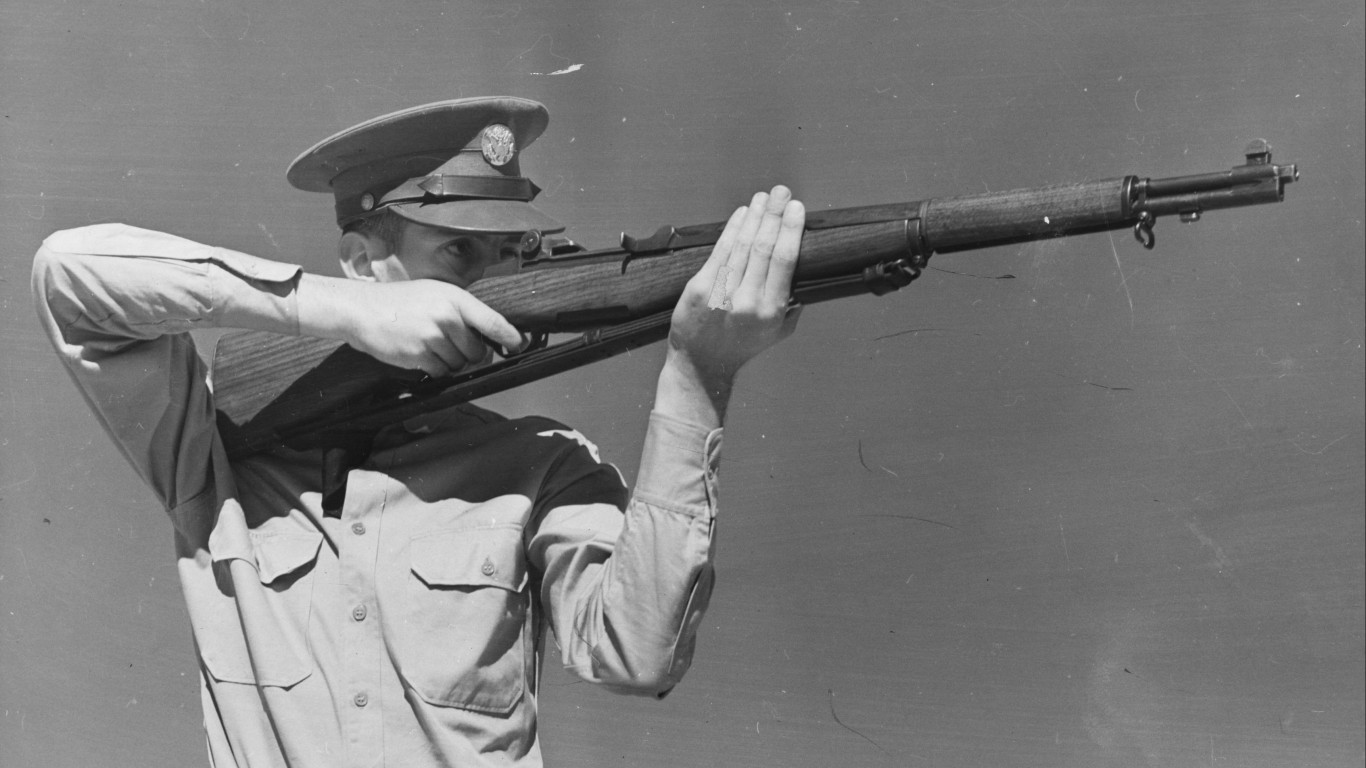
6. M1 Garand
> Weapon type: Rifle
> Caliber: .30-06
The M1 Garand was the standard U.S. Army infantry rifle during the Second World War, a period in which an estimated 5.4 million were manufactured. Described by Gen. George S. Patton, commander of the U.S. Third Army, as “the greatest battle implement ever devised,” the M1 Garand gave the U.S. military a significant advantage over the Axis powers.
While the German and Japanese military were still using bolt action rifles, the M1 Garand was semi-automatic with an eight-round capacity. Chambered for .30-06 ammunition, the rifle also packed a punch. Carried by every branch of the military, it could be accessorized with a bayonette or grenade launcher.
[in-text-ad]

7. M1 Carbine
> Weapon type: Rifle
> Caliber: .30 carbine
During World War II, the M1 Carbine was used by American soldiers for whom a full-size rifle would be too cumbersome. Shorter, and weighing about half as much as the 9.5 pound M1 Garand, the M1 Carbine was used by paratroopers, support staff, radio operators, mortarmen and soldiers navigating the jungle terrain of some Pacific islands.
The M1 Carbine was chambered for a light .30 caliber round. Though it was far less powerful than the M1 Garand, it offered greater range, accuracy, and firepower than a handgun.
8. M1903 Springfield
> Weapon type: Rifle
> Caliber: .30-06
In the early days of American involvement in the Second World War, the M1903 Springfield, a bolt action rifle, was issued to some American troops as production of the preferred M1 Garand was ramping up. As a result, the M1903 was used by Marines in Wake Island and Guadalcanal, as well as GIs in North Africa.
Variations of the M1903 were used throughout the war, most notably as a sniper rifle. Highly accurate, the rifle was said to be effective without a scope up to 656 yards – and in some extreme cases, as much as 2,500 yards.
9. Winchester Model 70
> Weapon type: Rifle
> Caliber: .30-06
When Winchester shipped nearly 400 of its bolt-action Model 70 rifles to the U.S. Marine Corps only months after the U.S. entered the Second World War, the military brass deemed them unsuitable for the battlefield. The lack of sling swivels, limited part availability, and questions about the guns’ sturdiness were among the reasons for the rejection.
Though some officers may not have liked the Winchester Model 70, many Marine marksmen disagreed. Compared to the standard issue M1903 Springfield rifles, Model 70 was lighter and more accurate, with an improved action and highly adjustable trigger. Ultimately, limited numbers of the Model 70 were used by Marine snipers in the Pacific throughout the war.
[in-text-ad-2]
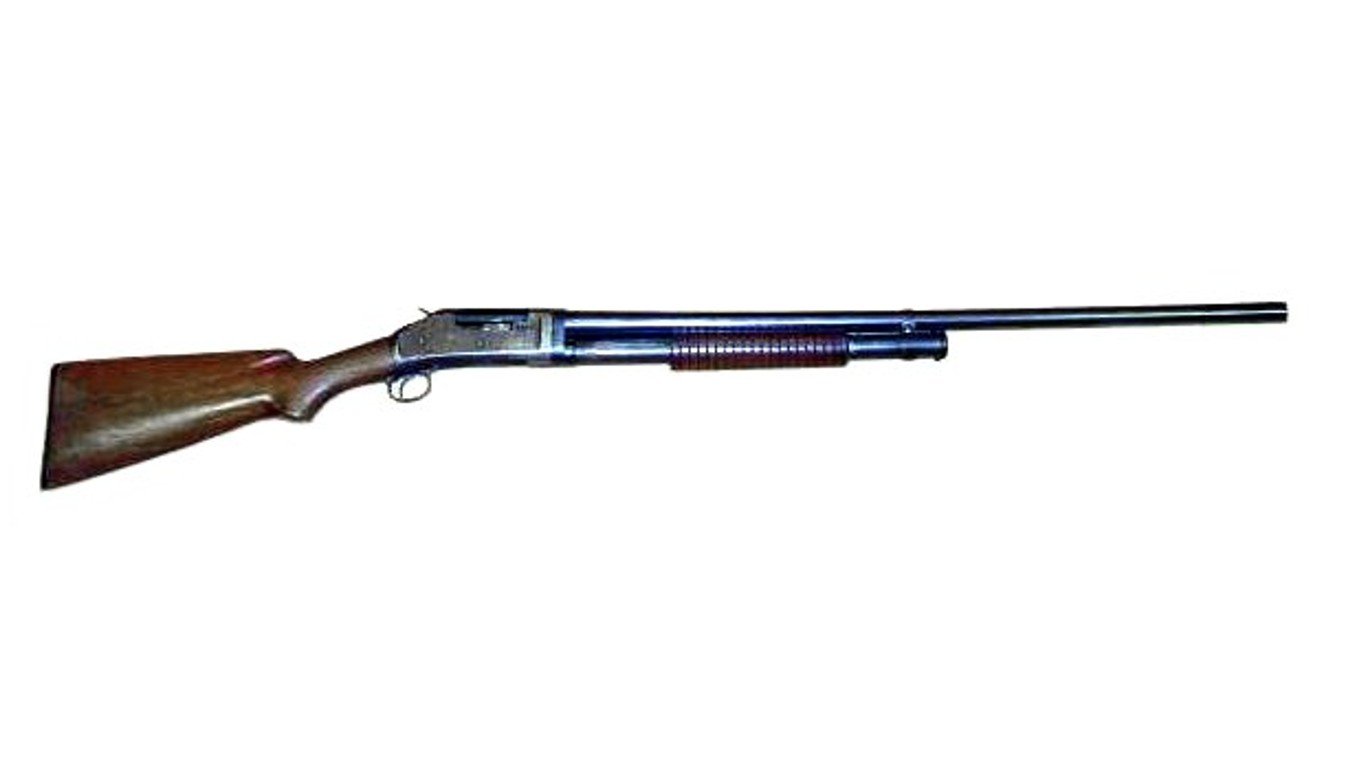
10. Winchester Model 1897
> Weapon type: Shotgun
> Chambered in: 12 gauge & 16 gauge
Widely used for clearing trenches in the First World War, the Winchester Model 1897 – a pump action shotgun – was also used in WWII. The shotgun was used by both the U.S. Army and Marine Corps during the war, though its use dwindled in favor of the updated Model 1912.
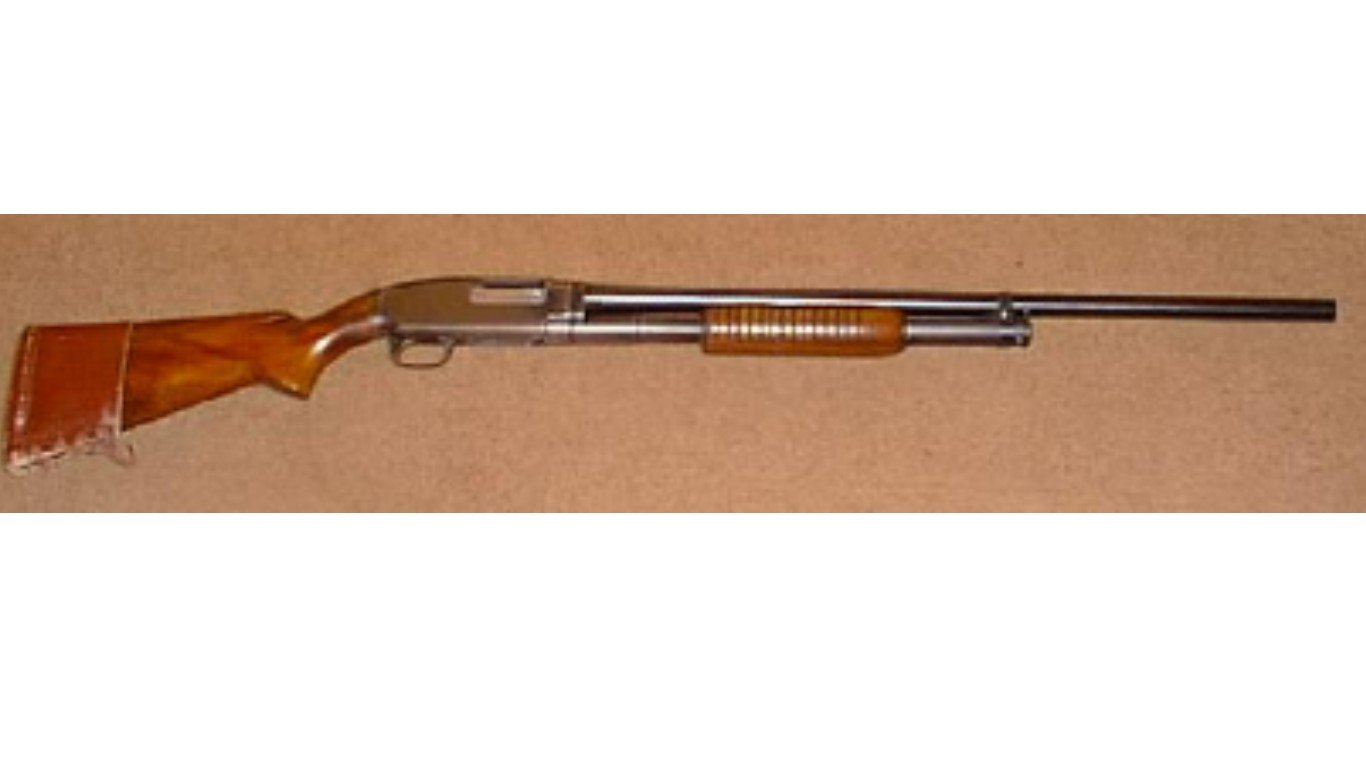
11. Winchester Model 1912
> Weapon type: Shotgun
> Chambered in: 12 gauge, 16 gauge
The U.S. government bought an estimated 80,000 Winchester Model 1912 shotguns during WWII. The Model 1912, or simply Model 12, was a pump action shotgun with a six round tubular magazine, typically chambered for 12 gauge shells. A deadly short-range weapon, the Model 1912 was used by every branch of the U.S. military – and was particularly favored by Marines in the Pacific theater.
[in-text-ad]

12. Remington Model 11
> Weapon type: Shotgun
> Chambered in: 12 gauge, 16 gauge
The Remington Model 11 was a semi-automatic shotgun with a five round capacity, though notably the Sportsman version had a three round capacity to comply with hunting regulations. These guns were procured by the government in the early days of the war to address an arms shortage.
Model 11s were used on the battlefield both in Europe and the Pacific, though many long barrelled versions were used for training anti-aircraft personnel. Shorter barrelled versions, meanwhile, were often used for guard duty.
13. Stevens Model 520/620
> Weapon type: Shotgun
> Chambered in: 12 gauge
The Stevens Model 520 and its slightly newer and more streamlined 620 variant, were pump-action shotguns. The type used by the U.S. military in WWII were typically chambered for 12 gauge ammunition and often featured a heat shield over the barrel. They were designated for use as trench guns, riot guns, and training guns. Slightly over 45,000 of these guns were produced during the war.
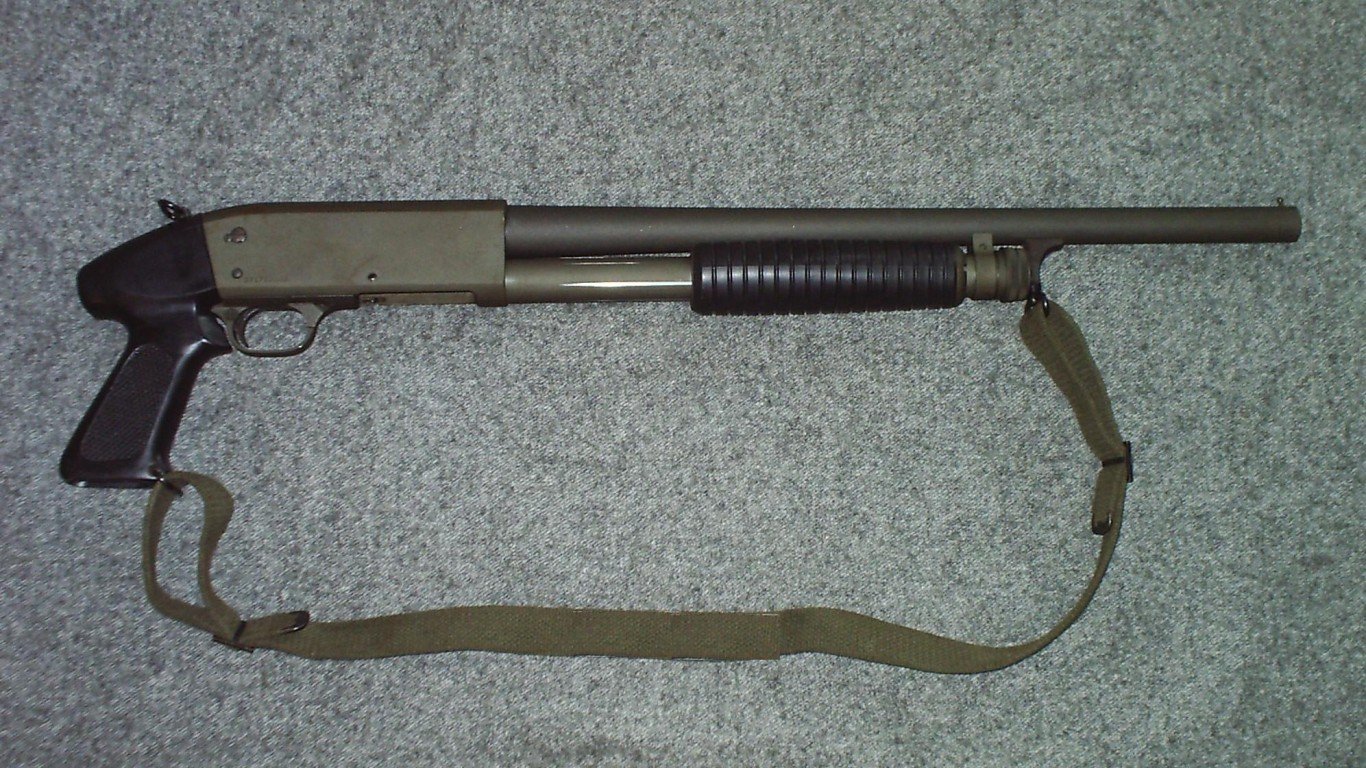
14. Ithaca 37
> Weapon type: Shotgun
> Chambered in: 12 gauge
One month before the Japanese bombed Pearl Harbor, the U.S. government ordered 1,420 Ithaca 37 shotguns to shore up a diminishing supply of combat shotguns. The 37 was a pump-action shotgun with a six round capacity, a ventilated heat shroud over the barrel, a bayonet mount, and swivel studs for a sling.
When Ithaca began filling the orders as the U.S. entered the war, 18 inch and 20 inch barrel versions of the 37 were in high demand in the dense jungles of the Pacific theater. The guns were also used by guards at U.S. bases in Europe.
[in-text-ad-2]
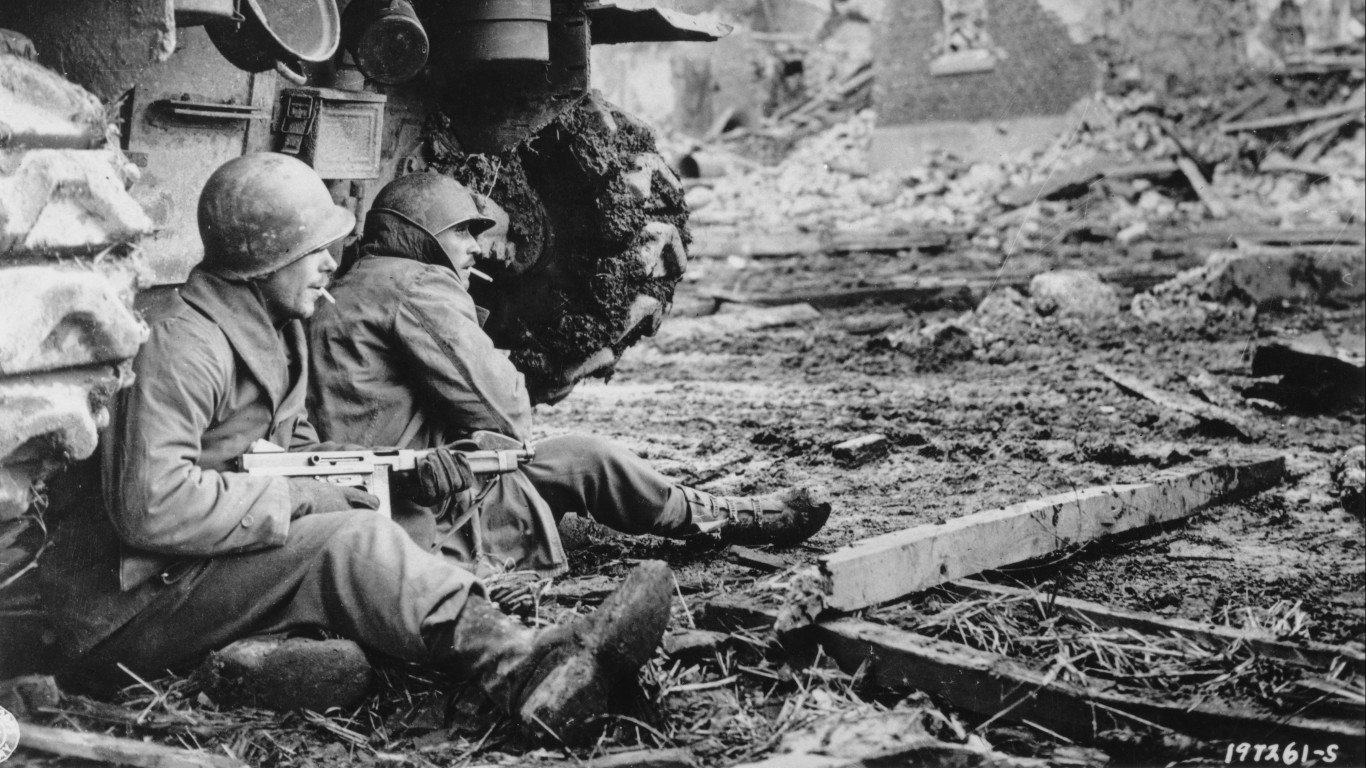
15. M1 Thompson
> Weapon type: Submachine gun
> Caliber: .45 ACP
The M1 Thompson, also known as the Tommy Gun, was a fully-automatic submachine gun that gained infamy during the Prohibition Era as a favorite among gangsters. During the war, however, over 1.5 million Tommy Guns were distributed to American and allied troops.
The type commonly used by the American military featured a 30 round box magazine and a firing rate of several hundred rounds per minute. Chambered for .45 ACP ammunition, the Thompson was practical and effective in close-quarters combat.
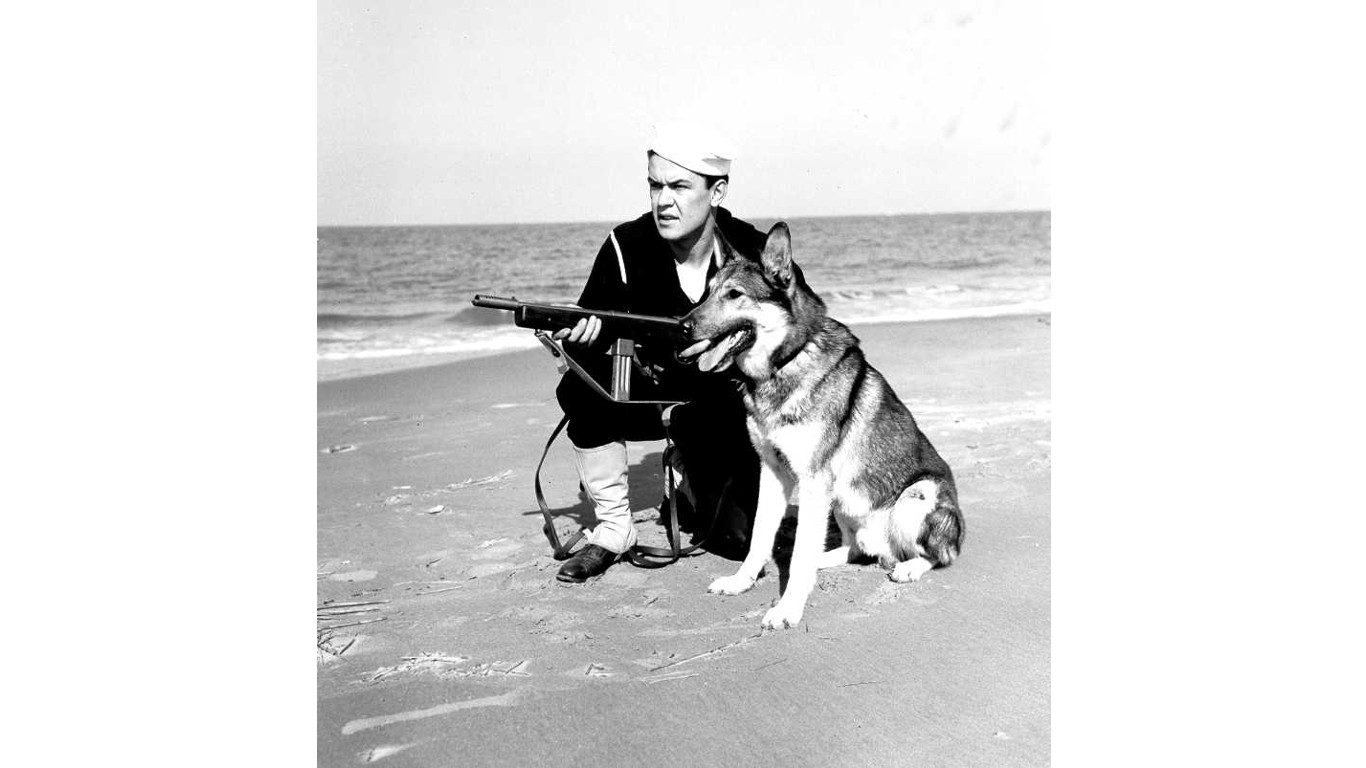
16. M50 Reising
> Weapon type: Submachine gun
> Caliber: .45 ACP
The M50 Reising was perhaps the most hated firearm American troops used in the Second World War. Lighter, more accurate, and cheaper to produce than the M1 Thompson, the M50 Reising was a promising piece of hardware – at least on paper. It had a number of shortcomings that far outweighed any positives, however. With a complicated design, the firearm was difficult to maintain and was prone to jamming, particularly in sandy or muddy conditions.
Early in the war, the U.S. Marine Corps authorized some 4,200 M50 Reising submachine guns for each division. As a result, the guns were widely used by Marine Raiders and paratroopers in Guadalcanal. According to some accounts, the commander of the 1st Marine Raider Battalion ordered his troops to toss their M50s in the rivers on Guadalcanal, recommending they use the bolt-action Springfield 1903 instead.
[in-text-ad]
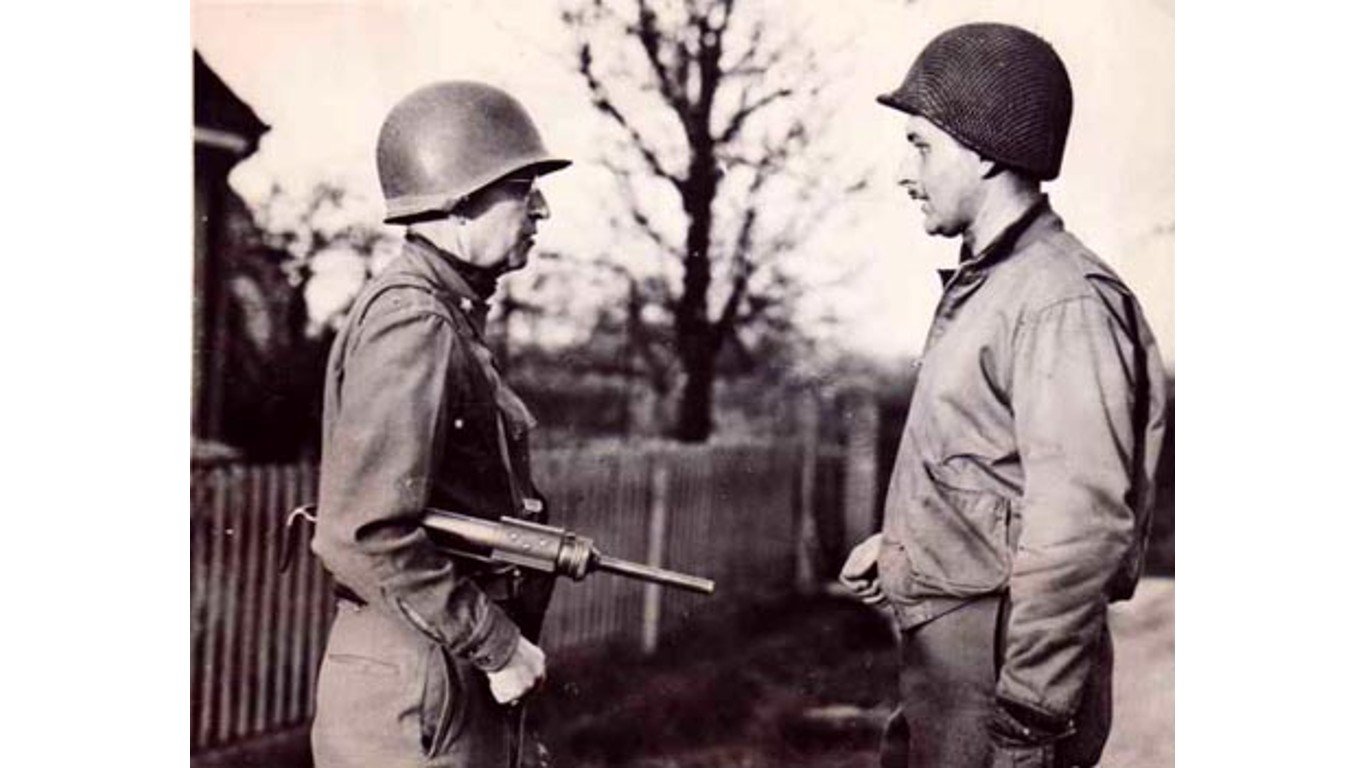
17. M3 “Grease Gun”
> Weapon type: Submachine gun
> Caliber: .45 ACP
The M3 submachine gun, or “Grease Gun,” as it was commonly known, was developed by General Motors and introduced in 1944 as a replacement for the M1 Thompson. Despite initial resistance – partially due to the gun’s rather austere appearance – Grease Guns held several advantages over the Tommy Gun, both from a government and battlefield perspective.
For one, Grease Guns were cheap, costing less than half as much to produce as Thompsons. They could also be manufactured faster. Soldiers in the field benefited from the gun’s shorter and lighter design, as well as a slowed rate of fire that allowed for greater accuracy and ammunition conservation. Grease Guns were also easier to reload and disassemble and clean than the Thompson.
Essential Tips for Investing: Sponsored
A financial advisor can help you understand the advantages and disadvantages of investment properties. Finding a qualified financial advisor doesn’t have to be hard. SmartAsset’s free tool matches you with up to three financial advisors who serve your area, and you can interview your advisor matches at no cost to decide which one is right for you. If you’re ready to find an advisor who can help you achieve your financial goals, get started now.
Investing in real estate can diversify your portfolio. But expanding your horizons may add additional costs. If you’re an investor looking to minimize expenses, consider checking out online brokerages. They often offer low investment fees, helping you maximize your profit.
Thank you for reading! Have some feedback for us?
Contact the 24/7 Wall St. editorial team.
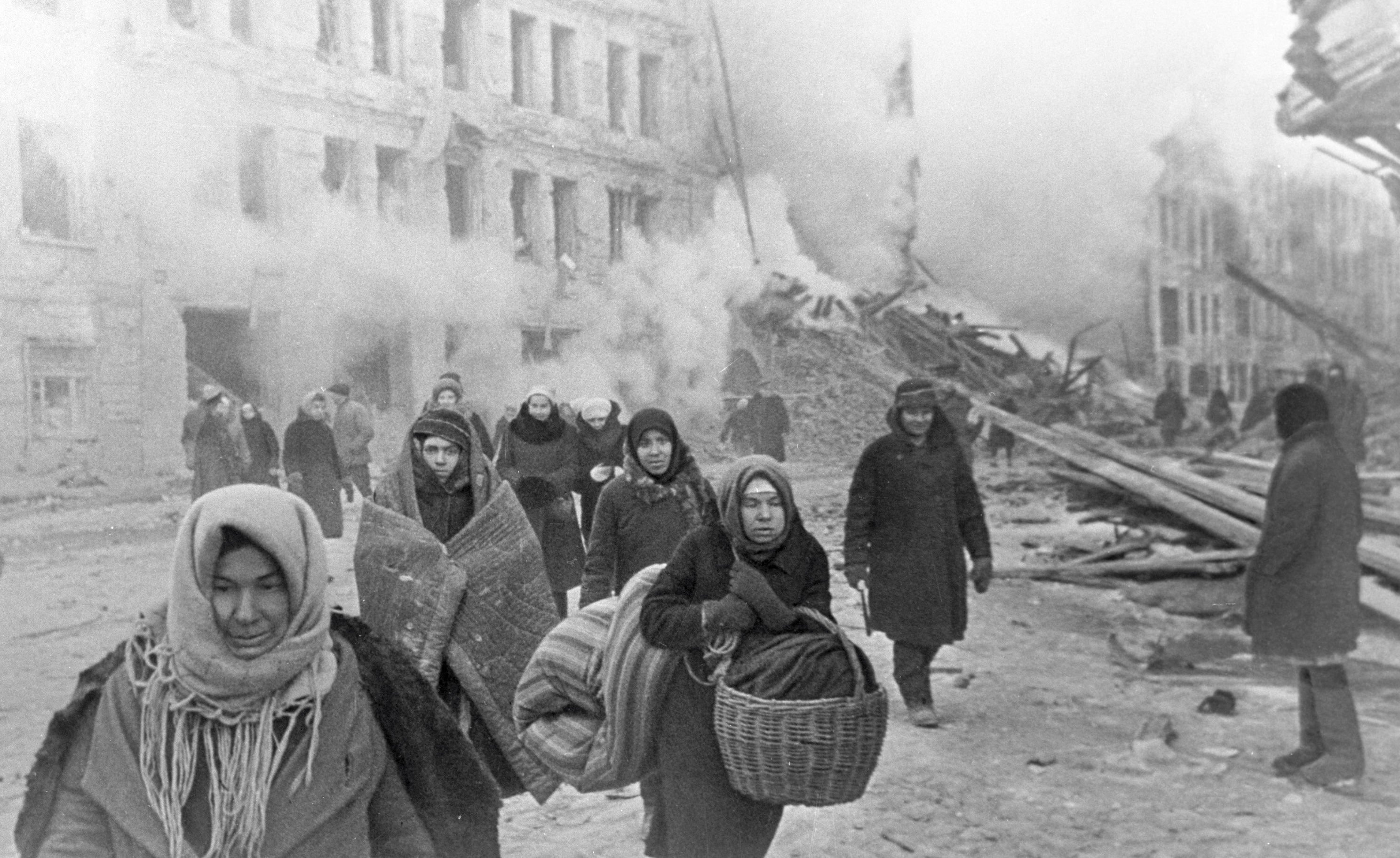 24/7 Wall St.
24/7 Wall St.